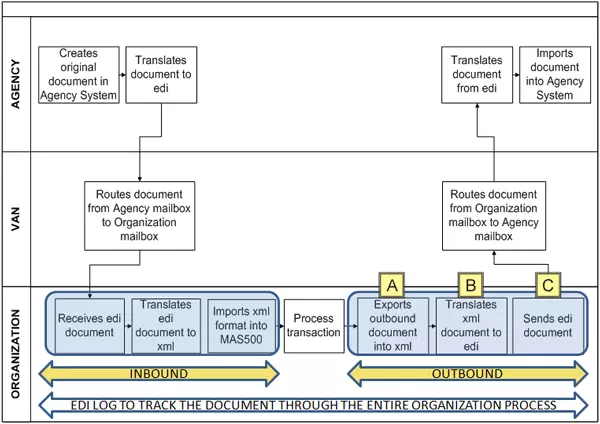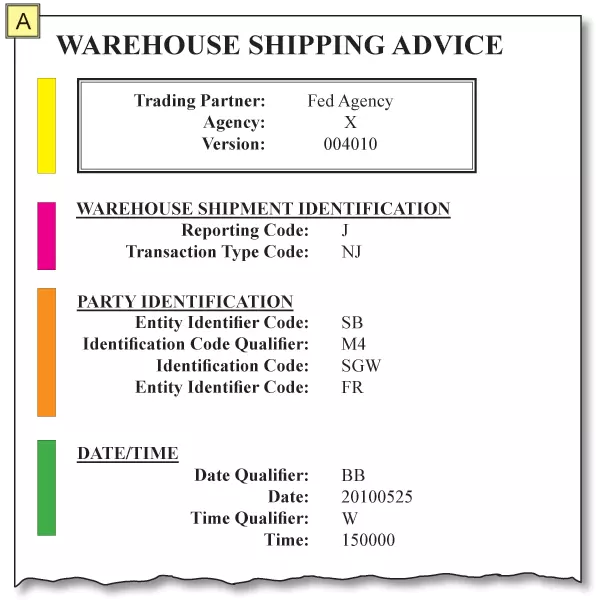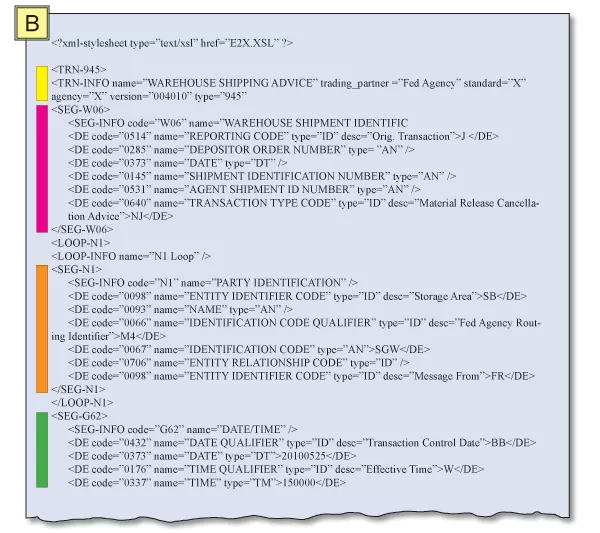For background on this particular project, please visit Avoiding MEGO.
Situation ...
This not-for-profit organization provides contract warehouse and distribution services for a large agency of the Federal government. While this organization was implementing a new ERP system, the agency informed our client it was changing its method of sending information electronically, from an outdated proprietary method to an XML-based EDI method.
Problem ...
This change was a requirement for our client to keep this contract, and the deadline imposed was extremely short. Neither the ERP software vendor nor the Value Added Network (VAN) provider for the EDI service was willing or able to work with our client to develop the required software, interfaces, and EDI definition documents. Furthermore, the agency was responsible for developing its own EDI specifications, and these specifications were still in development at the deadline specified for our client.
Solution ...
The biggest challenge to be overcome in meeting the agency's deadline were the constantly changing EDI specifications — and having up to 33 parties involved on behalf of the agency only compounded the challenge. Nonetheless, we worked with our client to:
- Obtain the best available specifications from the agency,
- Develop the XML-based specifications documents to support these,
- Repeatedly receive and process test EDI transaction, and
- Compare these results against source documents provided by the agency.
In short, the final specifications documents were iteratively developed by trial-and-error.
We also developed the software to automatically receive, parse, translate, and interface inbound EDI transactions into the main ERP system. This software also works in a similar manner to package outbound transactions from the ERP system into the agency's appropriate EDI document format.

The flowchart, above, shows the process, document, and systems flow among the organization (our client), their VAN provider, and the agency (their customer). Everything begins with a transaction begun in the agency's business system, which then translates it into an EDI document, routed through the VAN, and received and interfaced through the INBOUND processing. Once the transaction has been interfaced into our client's business system, their personnel process the transaction, which then triggers the OUTBOUND processing.
One of the key outbound transactions is a "Warehouse Shipping Advice" and the transformation of it from screen-based document (Item A) to XML document (Item B) to EDI document (Item C) is shown, below. Colors are used to cross-reference information during the transformation.



Results & Benefits ...
Beyond the most important benefit of meeting changed requirements for its largest customer, our client achieved many advantages from implementing EDI for this Federal agency, including:
- Automatic receipt and processing of inbound documents — This eliminates human errors and procrastination from the process.
- Immediate visibility of orders to process — Real-time knowledge of items to handle enables better scheduling and improves on-time shipment performance.
- Enhanced transparency and accountability — Information is now available to routinely evaluate performance against contract requirements and work to become "best in class" among peer vendors.
The organization's Executive Director noted this was a large and important project, and its benefits certainly justified the time and effort put into it.
Conclusion ...
Our client achieved many benefits from implementing EDI with a Federal agency, and they are now planning to extend this to their commercial customers to gain the same efficiency and effectiveness from inbound and outbound EDI documents.
For More Information ...
To discuss how technology usage and business process improvements could be applied to the issues facing your business, call us at 336.297.4200 to schedule a no-obligation consultation, or click here to contact us online.





